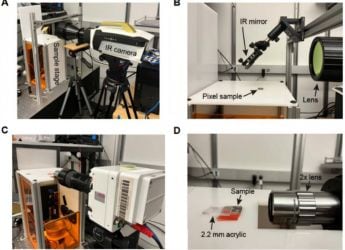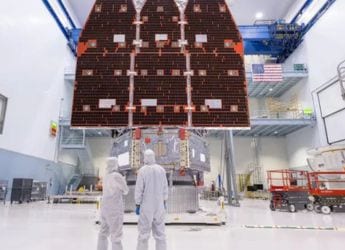- Home
- Science
- Science News
- NASA’s RASSOR Robot Digs Deep into Moon Mining Future with Successful Test
NASA’s RASSOR Robot Digs Deep into Moon Mining Future with Successful Test
NASA’s RASSOR robot successfully demonstrated regolith excavation in a lunar soil simulant test, showcasing its counterrotating drum design and informing development of the IPEx excavator for future Moon missions.

Photo Credit: NASA/Frank Michaux
NASA Tests RASSOR Robot for Future Moon Mining with IPEx Excavator in Focus
NASA's RASSOR (Regolith Advanced Surface Systems Operations Robot) was recently tested on simulated lunar soil at Kennedy Space Center's Granular Mechanics and Regolith Operations LabThe excavator is built to dig and haul Moon-like regolith, preparing technology for sustained lunar missions. On May 27, NASA mechanical engineer Ben Burdess observed RASSOR's counterrotating bucket drums churn through the soil simulant and carve a three-foot berm. This trial focuses on RASSOR's digging drums and directly informs development of NASA's next-generation Moon-mining excavator, the In-Situ Resource Utilization Pilot Excavator (IPEx)
RASSOR's Counterrotating Drums and Regolith Excavation
According to NASA's official website, each of RASSOR's arms carries a bucket drum that spins in the opposite direction of its mate. Engineers note that this opposing rotation gives RASSOR extra traction even in weak gravity. In the Kennedy lab test, those counterrotating drums anchored the robot into the simulant and effectively dug soil – proof that RASSOR can grip and move regolith reliably on the Moon. With that traction, RASSOR can dig, load, haul and dump loose soil.
The collected regolith can then be processed into hydrogen, oxygen and water, resources critical to sustaining astronauts on the Moon. In short, the test showed RASSOR effectively excavating lunar soil simulant while its drum design demonstrated how future machines can operate in the Moon's low gravity.
Toward the Moon with IPEx Excavator
NASA engineers say this RASSOR test was primarily to check the bucket-drum design slated for the In-Situ Resource Utilization Pilot Excavator (IPEx). RASSOR serves as a prototype for IPEx, which will be far more autonomous and capable.
IPEx is engineered as a combined bulldozer and dump-truck robot that can mine and transport large volumes of lunar soil. Ultimately, IPEx will dig up regolith and feed it into on-site processing units to extract oxygen, water and fuel from the Moon's soil. Using these local resources is a cornerstone of NASA's strategy for supporting a sustained human presence on the Moon and eventually Mars.
Get your daily dose of tech news, reviews, and insights, in under 80 characters on Gadgets 360 Turbo. Connect with fellow tech lovers on our Forum. Follow us on X, Facebook, WhatsApp, Threads and Google News for instant updates. Catch all the action on our YouTube channel.
Related Stories
- Samsung Galaxy Unpacked 2025
- ChatGPT
- Redmi Note 14 Pro+
- iPhone 16
- Apple Vision Pro
- Oneplus 12
- OnePlus Nord CE 3 Lite 5G
- iPhone 13
- Xiaomi 14 Pro
- Oppo Find N3
- Tecno Spark Go (2023)
- Realme V30
- Best Phones Under 25000
- Samsung Galaxy S24 Series
- Cryptocurrency
- iQoo 12
- Samsung Galaxy S24 Ultra
- Giottus
- Samsung Galaxy Z Flip 5
- Apple 'Scary Fast'
- Housefull 5
- GoPro Hero 12 Black Review
- Invincible Season 2
- JioGlass
- HD Ready TV
- Laptop Under 50000
- Smartwatch Under 10000
- Latest Mobile Phones
- Compare Phones
- Jolla Phone
- Realme P4x 5G
- OnePlus Ace 6T
- Nubia Flip 3
- Nubia Fold
- OPPO A6x 5G
- Samsung Galaxy Z TriFold
- Poco F8 Ultra
- Asus ProArt P16
- MacBook Pro 14-inch (M5, 2025)
- OnePlus Pad Go 2
- Poco Pad M1
- Just Corseca Skywatch Pro
- Honor Watch X5
- Acerpure Nitro Z Series 100-inch QLED TV
- Samsung 43 Inch LED Ultra HD (4K) Smart TV (UA43UE81AFULXL)
- Asus ROG Ally
- Nintendo Switch Lite
- Haier 1.6 Ton 5 Star Inverter Split AC (HSU19G-MZAID5BN-INV)
- Haier 1.6 Ton 5 Star Inverter Split AC (HSU19G-MZAIM5BN-INV)

















